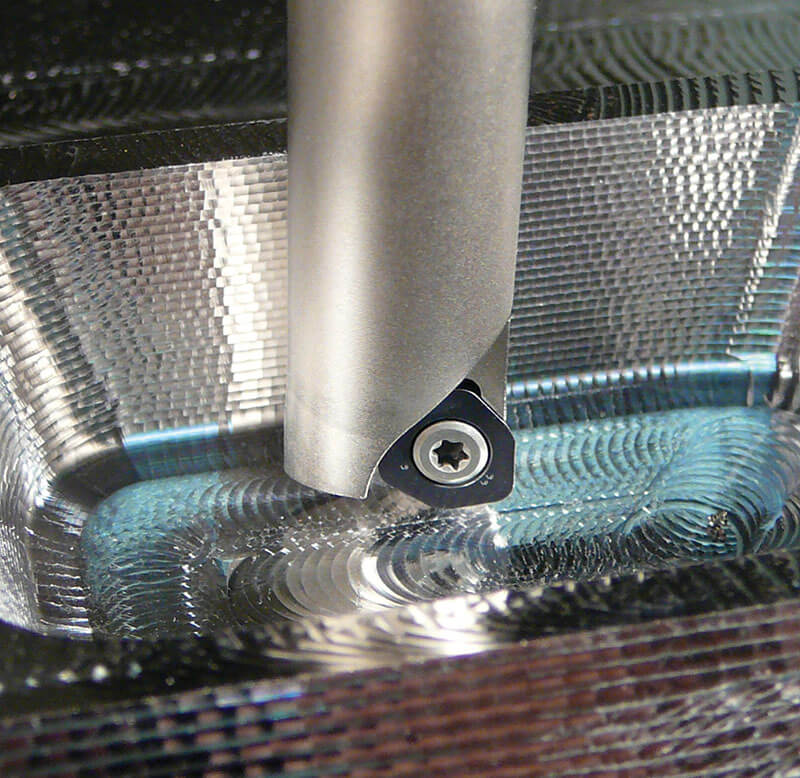Shop by Category
Loading...
RHINO-FEED™ High-Feed Milling Application Information
High-Feed Milling Recommendations
- Tool is most appropriate for "Z-level" roughing; ramp to Depth of Cut (DOC) and clear entire level.
- Solid plunging is not recommended with Rhino-Feed inserts. Ramping (up to 2° max.) is recommended.
- Climb milling is absolutely required with Rhino-Feed tooling. Cutter or part damage can occur with extended conventional milling.
- Try to maintain at least 75% of the cutter diameter on the workpiece whenever possible. Hanging a cutter off to the side of your work is detrimental to tool life and performance.
- Width of Cut (WOC) should be 60-75% of cutter diameter whenever possible. A slight scalloping effect between passes is acceptable. For longer-reach tools, this is especially important – cutting pressure should be on both sides of the center line.
- High-feed milling produces a thick chip that is efficient at carrying away heat. Combine this with running a slightly lower SFM than normal to get very good tool life.
- Use the Feed Rate Compensation charts on each insert page to compensate for chip thinning that occurs with Rhino-Feed inserts. This will provide for optimum metal removal rates and tool life.

Technical Considerations for High-Feed Milling
- Always use anti-seize compound on screws.
- Change insert screw every 10 inserts.
- Use the shortest-length tool holder (end mill holder) for maximum rigidity; the shank of the cutting tool should be up inside the machine spindle taper whenever possible.
- Thoroughly clean pocket and screw at each insert change.
- Use tool holders appropriate for roughing operations: end mill holders and power chucks are recommended; collets are not recommended.
- Insert screws should be tightened before the clamping screw.

